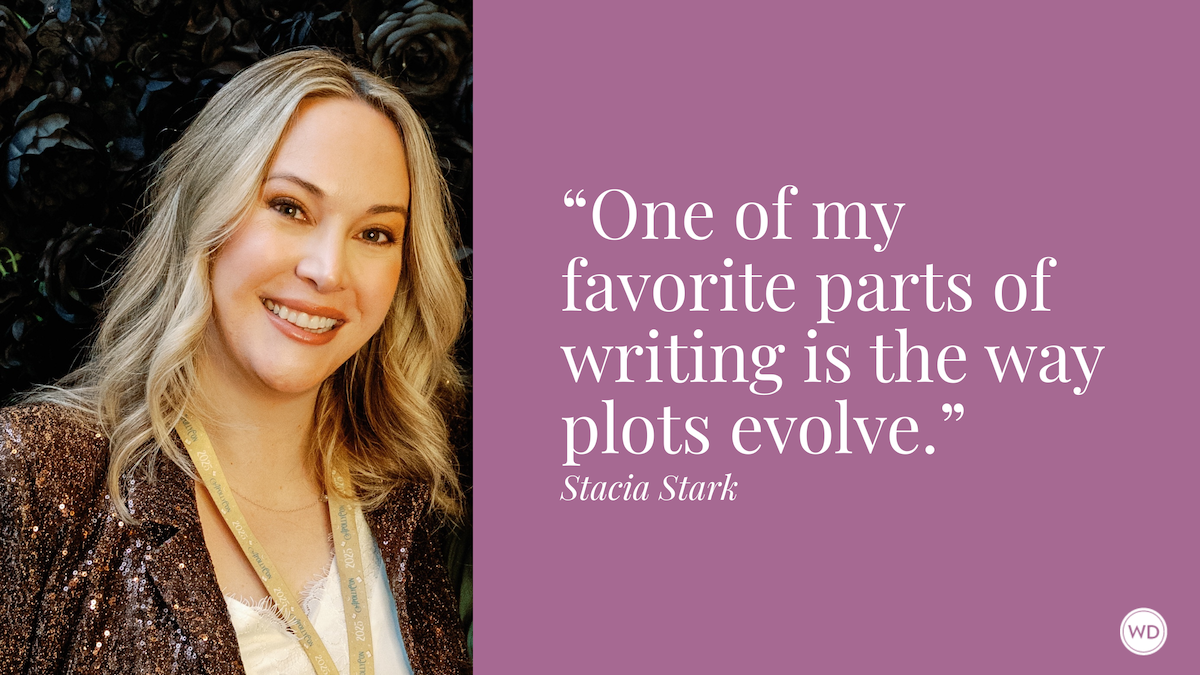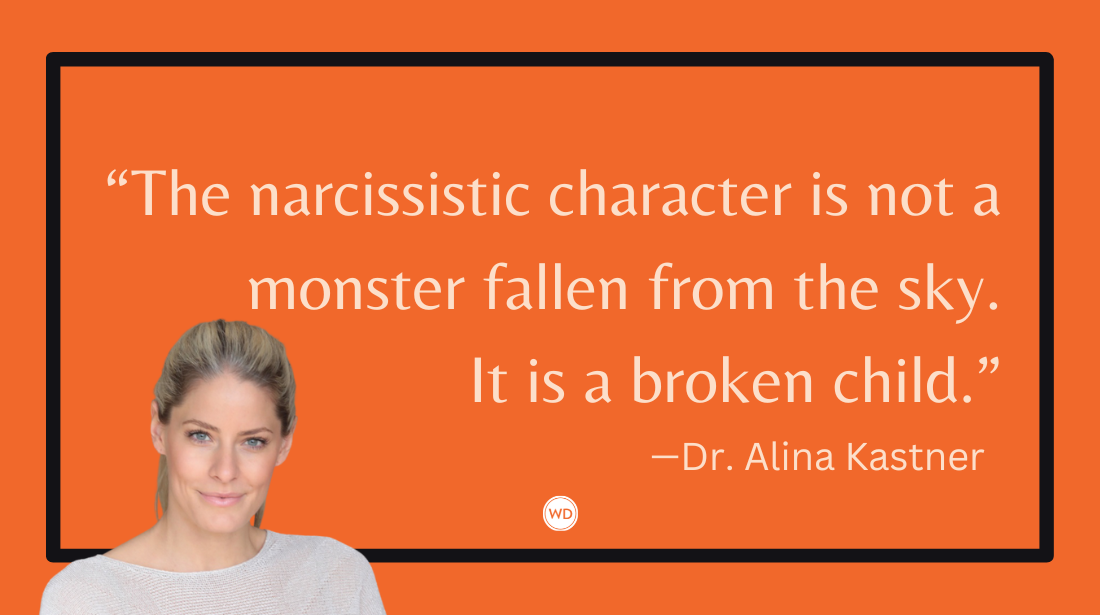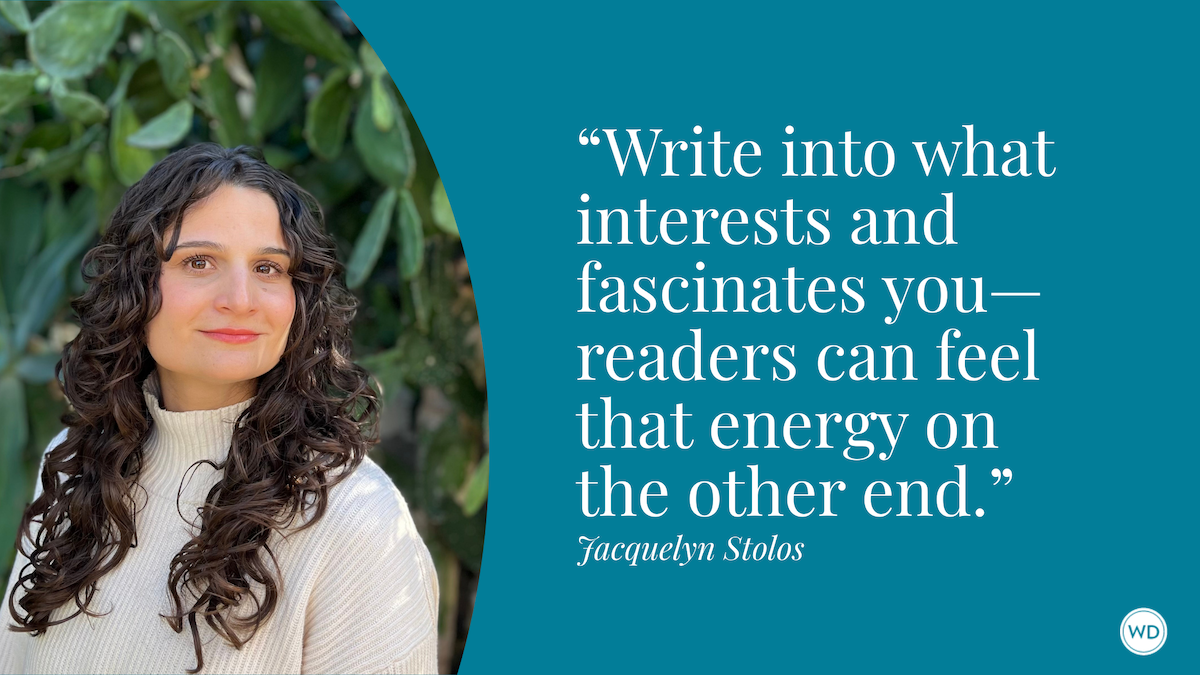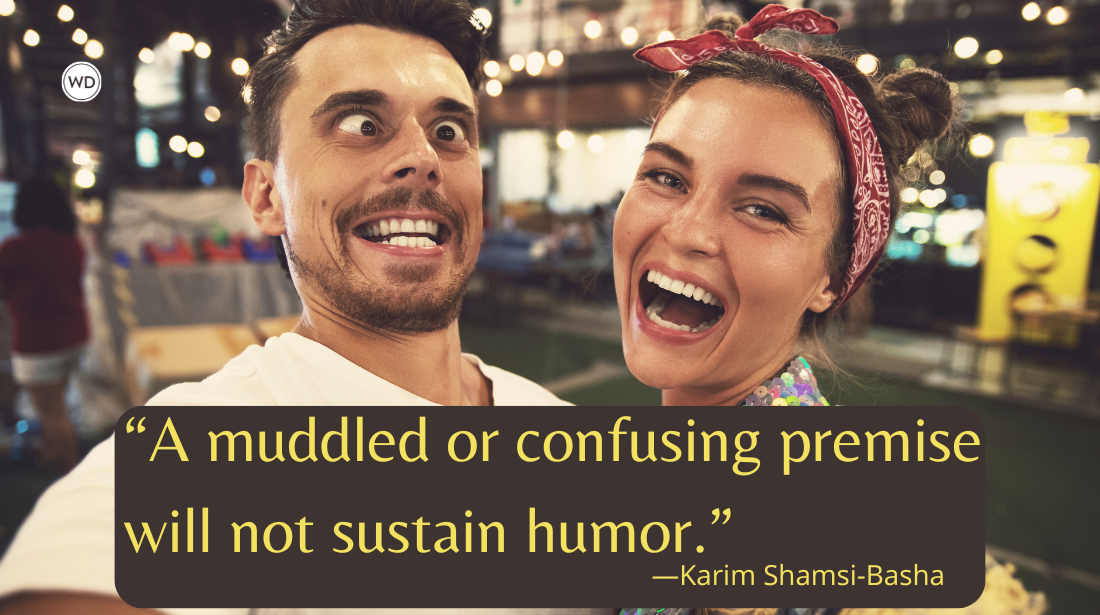How to Balance Action, Narrative, and Dialogue in Your Novel
Most of the time, we want to balance our scenes using dialogue, action, and narrative to engage readers at an emotional level and keep them hooked. Here’s how to do that.
Most of the time, we want to balance our scenes using three elements of fiction: dialogue, action, and narrative. This is one reason you want to put your character in a scene with other characters as often as possible. Scenes that weave together these three elements engage the reader at an emotional level much more effectively than scenes that are only dialogue, only narrative, or only action.
The following is an example of a well-woven scene from Sue Monk Kidd's The Secret Life of Bees. In this scene, Kidd seems to want to talk to us about the risk of getting "stung" if we want to be true beekeepers. If we want to make a difference in the world, we must take risks, and loving something is enough reason to do it. Rather than "preach" to us through narrative alone, the author blends the scene using dialogue, action and narrative, pulling the reader in.
Rescuing bees took us the entire morning. Driving back into remote corners of the woods where there were barely roads, we would come upon 25 beehives up on slats like a little lost city tucked back in there. We lifted the covers and filled the feeders with sugar water. Earlier we'd spooned dry sugar into our pockets, and now, just as a bonus, we sprinkled it on the feeding rims. I managed to get stung on my wrist while replacing a lid onto a hive box. August scraped out the stinger.
"I was sending them love," I said, feeling betrayed.
August said, "Hot weather makes the bees out of sorts, I don't care how much love you send them." She pulled a small bottle of olive oil and bee pollen from her free pocket and rubbed my skin—her patented remedy. It was something I'd hoped never to test out.
"Count yourself initiated," she said. "You can't be a true beekeeper without getting stung."
A true beekeeper. The words caused a fullness in me, and right at that moment an explosion of blackbirds lifted off the ground in a clearing a short distance away and filled up the whole sky. I said to myself, Will wonders never cease? I would add that to my list of careers. A writer, an English teacher, and a beekeeper.
"Do you think I could keep bees one day?" I asked.
August said, "Didn't you tell me this past week one of the things you loved was bees and honey? Now, if that's so, you'll be a fine beekeeper. Actually, you can be bad at something, Lily, but if you love doing it, that will be enough."
The sting shot pain all the way to my elbow, causing me to marvel at how much punishment a minuscule creature can inflict. I'm prideful enough to say I didn't complain. After you get stung, you can't get unstung no matter how much you whine about it. I just dived back into the riptide of saving bees.
How did Kidd know when and where to put what? This is largely an intuitive process, and I'm guessing she didn't do a lot of thinking about how she was weaving the elements of fiction as she was writing her first draft. You have to move inside of your characters in order to do this. You can't be thinking about how to do it, at least not while writing the first draft. During the revision process, when reading back through the story, you can see better when a scene is top-heavy with dialogue, narrative, or action. The perfectly balanced scene has a rhythm to it; you'll learn to recognize it when it's there.
Keeping Talk in the Foreground
Having said all that, knowing when to only focus on one element is as important as learning to weave them all together. Is it ever a good thing to create a scene with only dialogue? Only narrative? Only action?
If you want to highlight a particular character trait in your viewpoint character or focus on something specific that the characters are talking about, you don't want the scene cluttered, the reader distracted or the pace slowed by action or narrative. You know how sometimes when someone is telling you a story, the setting, the other people around you, everything just kind of fades away, and you're intent only on what the other person is saying? This is what it's like when you cut away action and narrative and leave only your characters' spoken words.
Check out this scene in The Feast of Love by Charles Baxter. The viewpoint character, Bradley, works at a coffee shop called Jitters. His co-worker, Chloe, asks him what's the worst thing that ever happened to him. Up until that time, the author had woven dialogue, narrative, and action into a nicely balanced scene, but it was time to speed things up. Bradley starts to tell Chloe about how he and some buddies were in the cathedral at Notre Dame in Paris. The story's getting long and Chloe tells him to hurry it up. What the author wants to highlight here is that Bradley actually thinks the worst thing he's ever done in his life is knock over a bunch of candles in a cathedral. The dialogue focuses on this alone:
"Let me finish this story … and because my hand was shaking, I reached down to the holder, this freestanding holder or candelabra or whatever of votive candles, and somehow, I don't know how this happened, my hand caused this holder of candles, all these small flames, all these souls, to fall over, and when it fell over, all the candles, lit for the sake of a soul somewhere, there must have been a hundred of them, all of them fell to the floor, because of me, and all of them went out. And you know what the nun did, Chloe, the nun who was standing there?"
"She spoke French?"
"No. She could have, but she didn't. No, what she did was, she screamed."
"Wow."
"Yeah, the nun screamed in my face. I felt like …"
"You felt like pretty bad, Mr. S. I can believe it. But you know, Mr. S, those were just candles. They weren't really souls. That's all superstition, that soul stuff."
"Oh, I know."
"No kidding, Mr. S, you shouldn't be so totally morbid. I thought when you were telling me about the worst thing you ever did, it'd be, like, beating up a blind guy and stealing his car."
"No, I never did that."
"Oscar did, once. You should get him to tell you about it."
"Okay."
"He was drunk, though." She prettily touches her perfect hair. "And the guy wasn't really blind. He just said he was, to take advantage of people. It was, like, a scam. Oscar saw through all that. It's nine o'clock now, Boss. We should open up."
"Right." And I unlock the curtain, and touch a switch, and slowly the curtain rises on the working day. The candles are nothing to Chloe; they're just candles. I feel instantly better. Bless her.
The scene wouldn't have had the same impact if the author had woven action and narrative throughout the dialogue. This is a neurotic character, and this fast-paced scene of dialogue shows the extent of his neurosis, especially compared to Chloe's explanation of the candles being just candles. Because this part of the scene is only dialogue, we get the full impact of his neurosis and how it expresses itself in his life. When you isolate a character's dialogue, if the reader is paying attention, he'll become privy to the character's personality and motives in a way that's not possible in the woven scene just because there's too much going on.
Pacing Your Scenes
Pacing is probably the most common fiction element to pay attention to when considering when and when not to weave dialogue, narrative, and action. If you're creating a fast-paced conflict scene between two or more people, you might do well to consider only dialogue, at least for parts of it. In Wally Lamb's She's Come Undone, the young viewpoint character, Dolores, is fed up with her mother, who has been grieving over the loss of her baby for more than four years and has acquired all kinds of obsessive-compulsive disorders, the most recent being an obsession with her new parakeet, Petey. Dolores has already been narrating a lot of this, but now it's time for her to act out her feelings. In a scene of dialogue, the author quickly shows what Dolores has taken pages to tell us:
I hated Petey—fantasized about his flying accidentally out a window or into the electric fan so that his spell over Ma would be broken. My not kissing Ma anymore was a conscious decision reached one night at bedtime with the purpose of hurting her. "Well, you're stingy tonight," she said when I turned my face away from her goodnight kiss.
"I'm not kissing you anymore, period," I told her. "All day long you kiss that bird right on its filthy beak."
"I do not."
"You do so. Maybe you want to catch bird diseases, but I don't."
"Petey's mouth is probably cleaner than my mouth and yours put together, Dolores," was her argument.
"That's a laugh."
"Well, it's true. I read it in my bird book."
"Next thing you know, you'll be French-kissing it."
"Never mind French-kissing. What do you know about that kind of stuff? You watch that mouth of yours, young lady."
"That's exactly what I'm doing," I said. I clamped my hand over my mouth and stuffed my whole face into the pillow.
As you can see, this passage is very effective without a bunch of narrative bogging down the moment. The dialogue here shows Dolores' true attitude toward Petey, but more importantly, it demonstrates her feelings toward her mother. This is dialogue at its most powerful. It can take the protagonist pages to tell us something in narrative, whereas a scene of dialogue can quickly show us through that character's own words said out loud. Narrative explains, and dialogue blurts out.
Similar reasoning applies when writing scenes with only narrative or only action. You want to focus on something in your character's mind or describe something that would only sound contrived in dialogue, so you use straight narrative. Or the action needs to drive the scene forward because it's intense and emotional, and your characters just wouldn't be talking during this time.
Sometimes, as in real life, there's just nothing to say at the moment. Always, always, always let your characters lead you.
Striking a Balance
There are no hard-and-fast rules about when and when not to blend dialogue, action, and narrative. To weave them together well is to find your story's rhythm. But there are a few questions you can ask yourself about your story, especially in the rewrite stage, that can help you know which elements are most effective for a particular scene, and which might be better used elsewhere.
Ask yourself:
- Is the story moving a little too slowly, and do I need to speed things up? (Use dialogue.)
- Is it time to give the reader some background on the characters so they're more sympathetic? (Use narrative, dialogue, or a combination of the two.)
- Do I have too many dialogue scenes in a row? (Use action or narrative.)
- Are my characters constantly confiding in others about things they should only be pondering in their minds? (Use narrative.)
- Likewise, are my characters alone in their heads when my characters in conversation would be more effective and lively? (Use dialogue.)
- Is my story top-heavy in any way at all—too much dialogue, too much narrative, or too much action? (Insert more of the elements that are missing.)
- Are my characters providing too many background details as they're talking to each other?
- (Use narrative.)
Whether we're using dialogue, action, or narrative to move the story forward, any or all three of these elements are doing double duty by revealing our characters' motives. Your story's dialogue can reveal motive in a way that's natural and authentic because whether we're aware of it or not, we reveal our own motives all the time in our everyday lives.
And to understand a character's motive is to understand the character.









